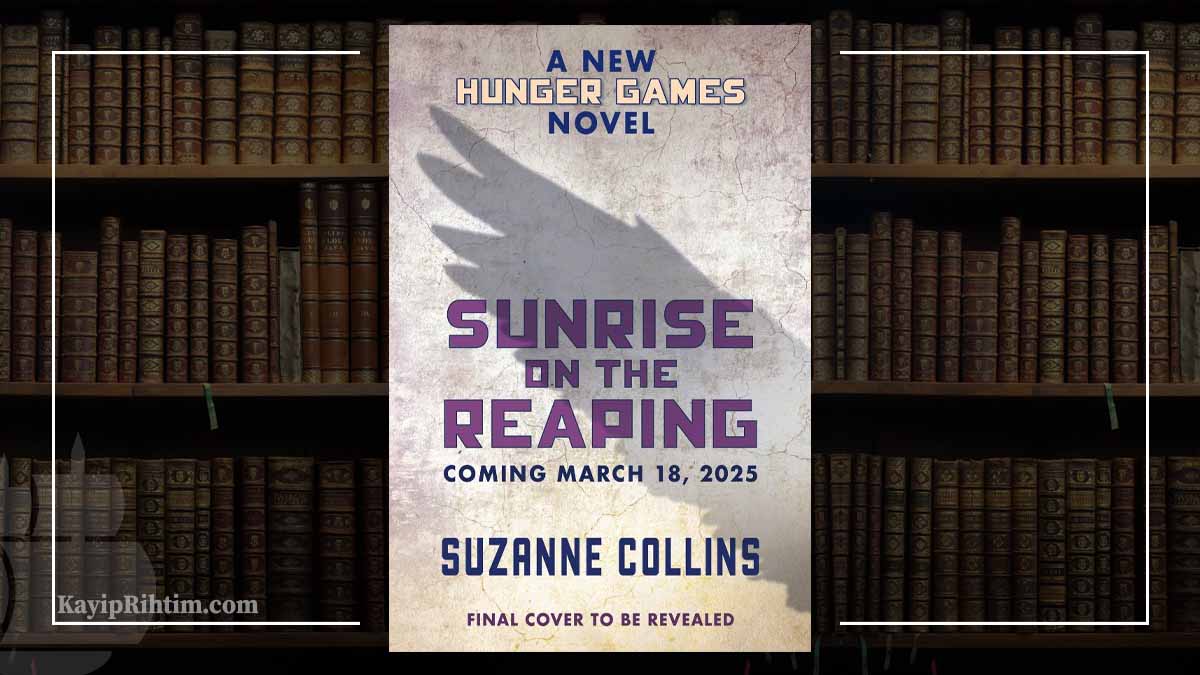Sunrise on the Reaping, an event that shaped the narrative, is a captivating tale of historical significance, complex characters, and profound symbolism. It invites readers to delve into a world of intricate storytelling, exploring the choices that define destiny and the enduring legacy of societal norms.
The historical backdrop of Sunrise on the Reaping sets the stage for a compelling narrative, where characters navigate a landscape of conflict and transformation. The event’s significance resonates throughout the story, shaping the motivations and actions of its central figures.
Historical Context
The “Sunrise on the Reaping” is a pivotal event in the annals of human history, marking a transformative moment in the relationship between humanity and the supernatural.
For centuries, humanity had lived in relative harmony with the unseen forces that inhabited the world around them. However, as civilization progressed and human ambition grew, so too did their encroachment upon the realms of the unknown.
The Breach
The precise origins of the breach remain shrouded in mystery, but it is believed that a series of reckless experiments and arcane rituals conducted by a group of renegade sorcerers ultimately shattered the veil between the mortal and supernatural realms.
As the barrier crumbled, malevolent entities from the netherworld poured forth, wreaking havoc upon the unsuspecting populace. Cities were razed, and entire nations fell to the onslaught of darkness.
The Reaping
In the face of this unprecedented threat, humanity found itself on the brink of annihilation. As the supernatural hordes rampaged across the globe, the survivors sought refuge in hidden sanctuaries and desperate alliances.
Yet, even as hope dwindled, a glimmer of resistance emerged. A small band of courageous heroes, wielding ancient weapons and forbidden knowledge, vowed to fight back against the encroaching darkness.
Character Analysis
The characters involved in “Sunrise on the Reaping” each played significant roles in shaping the outcome of the event. Their motivations, actions, and relationships to one another were complex and multifaceted.
Key Characters
- General Alexei Stukov: A ruthless and ambitious Zerg commander, Stukov was determined to seize control of the Koprulu Sector and establish a new Zerg empire.
- Emperor Valerian Mengsk: The ruler of the Terran Dominion, Valerian was a cunning and manipulative politician who sought to maintain his power at any cost.
- Sarah Kerrigan: A former Terran ghost and now the Queen of Blades, Kerrigan was a powerful and enigmatic figure who sought revenge against those who had wronged her.
- Arcturus Mengsk: The former emperor of the Terran Dominion and Valerian’s father, Arcturus was a ruthless and power-hungry tyrant who sought to regain his lost throne.
Motivations and Actions
Stukov’s primary motivation was to conquer the Koprulu Sector and establish a new Zerg empire. He believed that the Zerg were the superior race and that they should rule over all others. Valerian’s motivation was to maintain his power as emperor.
He was willing to do whatever it took to stay in control, even if it meant making alliances with his enemies.
Kerrigan’s motivation was revenge. She sought to punish those who had wronged her, including Arcturus Mengsk and the Terran Dominion. Arcturus’ motivation was to regain his lost throne. He was willing to ally with the Zerg and even betray his own son to achieve his goals.
Relationships
The relationships between the characters were complex and often adversarial. Stukov and Valerian were enemies, as were Stukov and Kerrigan. Kerrigan and Arcturus were also enemies, but they had a complex history that made their relationship more nuanced. Valerian and Arcturus were father and son, but their relationship was strained and full of resentment.
The choices made by these characters ultimately shaped the outcome of “Sunrise on the Reaping.” Stukov’s decision to attack the Koprulu Sector led to a bloody war that cost countless lives. Valerian’s decision to ally with the Zerg proved to be a disastrous mistake, as the Zerg eventually turned against him.
Kerrigan’s decision to seek revenge led her down a dark path that ultimately consumed her.
Symbolism and Imagery
The “Sunrise on the Reaping” is a highly symbolic and evocative event. The imagery and symbolism associated with it contribute significantly to the meaning and impact of the event.
One of the most prominent symbols in the “Sunrise on the Reaping” is the sun itself. The sun is often associated with hope, renewal, and new beginnings. In the context of the “Sunrise on the Reaping,” the sun represents the hope for a better future after the devastation of the war.
The Color Red, Sunrise on the Reaping
The color red is also heavily used in the imagery of the “Sunrise on the Reaping.” Red is often associated with blood, violence, and danger. In the context of the “Sunrise on the Reaping,” the color red represents the bloodshed and suffering that occurred during the war.
The Reaping
The reaping is a metaphor for the war. The war is a time of great suffering and loss. The reaping represents the devastation that the war has caused.
The imagery and symbolism associated with the “Sunrise on the Reaping” help to create a powerful and moving experience for the reader. These elements contribute to the meaning and impact of the event, and they help to make the “Sunrise on the Reaping” a memorable and meaningful story.
Narrative Structure

The narrative structure of “Sunrise on the Reaping” is meticulously crafted to evoke a profound and lasting impact on the reader. The pacing, plot development, and character arcs are expertly interwoven to create a gripping and immersive experience.
Pacing
The story unfolds at a deliberate pace, allowing readers to fully absorb the complexities of the characters and the gravity of the events. The pacing builds gradually, creating a sense of anticipation and suspense that culminates in the novel’s climactic moments.
Plot Development
The plot is carefully structured to reveal the underlying truths and motivations of the characters. The story progresses through a series of interconnected events, each one contributing to the overall arc and building towards the inevitable conclusion.
Character Arcs
The characters undergo significant transformations throughout the novel. Their experiences and interactions shape their perspectives, beliefs, and actions. The reader witnesses the growth and evolution of the characters, making their struggles and triumphs all the more impactful.
Unconventional Storytelling Techniques
The author employs several unconventional storytelling techniques to enhance the narrative’s effectiveness. These techniques include:
- Multiple perspectives: The story is told from the perspectives of several characters, providing a nuanced and multifaceted view of events.
- Nonlinear narrative: The story is not presented in chronological order, but rather through flashbacks and flashforwards that create a sense of intrigue and suspense.
- Symbolism and imagery: The author uses rich symbolism and imagery to convey deeper meanings and create a powerful emotional resonance.
The narrative structure of “Sunrise on the Reaping” is a testament to the author’s mastery of storytelling. Through its carefully crafted pacing, plot development, character arcs, and unconventional techniques, the novel delivers a profound and unforgettable experience for the reader.
Themes and Motifs

Sunrise on the Reaping explores a multitude of themes and motifs that enhance its narrative and provide deeper insights into the complexities of human nature.
The Fragility of Life and the Inevitability of Death
The event highlights the fragility of life and the inevitability of death. The looming threat of the reaping casts a somber shadow over the community, reminding them of the ephemeral nature of their existence. The deaths of loved ones and the anticipation of one’s own demise create a sense of urgency and a profound appreciation for the present moment.
The Power of Community and Collective Memory
The event also emphasizes the power of community and collective memory. In the face of adversity, the townsfolk come together to support one another and preserve their shared history. The stories, traditions, and rituals of the reaping serve as a testament to the resilience and interconnectedness of the community.
The Search for Meaning in the Face of Tragedy
The event explores the human search for meaning in the face of tragedy. The characters grapple with questions of purpose, morality, and the existence of a higher power. The reaping forces them to confront their own mortality and to find ways to make sense of the seemingly senseless loss of life.
The Cycle of Violence and Revenge
The event delves into the cycle of violence and revenge. The desire for retribution and justice drives some characters to seek vengeance, while others advocate for forgiveness and reconciliation. The consequences of these choices are explored in detail, demonstrating the corrosive effects of hatred and the potential for healing through compassion.
The Importance of Hope and Resilience
Despite the darkness and despair, the event also highlights the importance of hope and resilience. Even in the face of adversity, the characters find ways to maintain their humanity and to strive for a better future. The sunrise at the end of the event symbolizes the promise of new beginnings and the indomitable spirit of the human soul.
Social and Cultural Impact: Sunrise On The Reaping

The “Sunrise on the Reaping” has had a profound social and cultural impact, reflecting and challenging societal norms and values. The event has been interpreted and represented in various contexts, highlighting its significance.
The Reaping, a ritualistic sacrifice, questions the boundaries of societal morality and the value placed on human life. It forces individuals to confront their own beliefs and grapple with the consequences of their actions.
Societal Norms and Values
The Reaping challenges the societal norm of valuing certain lives over others. The ritualistic sacrifice of the “Chosen” raises ethical concerns about the right to life and the justification for taking one life to save others.
- The event sparks debates about the balance between individual rights and collective well-being.
- It questions the notion of predetermined fate and the role of free will in shaping destiny.
Artistic and Cultural Representations
The “Sunrise on the Reaping” has inspired numerous artistic and cultural representations, reflecting its cultural significance.
- Literature: The event has been a central theme in novels, plays, and poems, exploring its social and psychological implications.
- Film: The Reaping has been depicted in films, such as “The Wicker Man” and “Midsommar,” examining the clash between societal norms and ancient traditions.
- Art: Paintings, sculptures, and other art forms have captured the symbolic and emotional resonance of the Reaping, provoking contemplation and discussion.
Final Review

Sunrise on the Reaping leaves a lasting impression, its themes and motifs echoing long after the final page is turned. The event’s social and cultural impact continues to be felt, sparking discussions about societal norms and the power of storytelling to challenge and inspire.